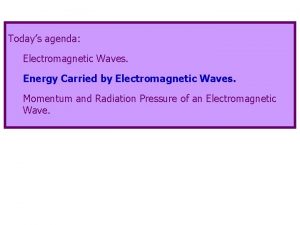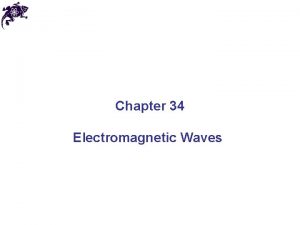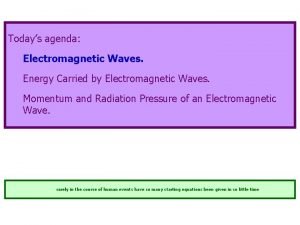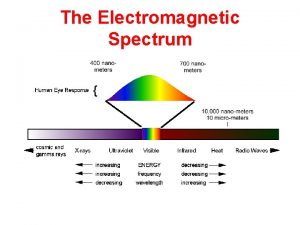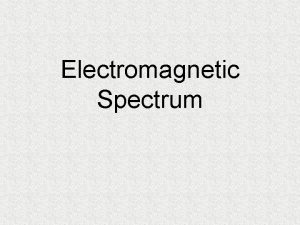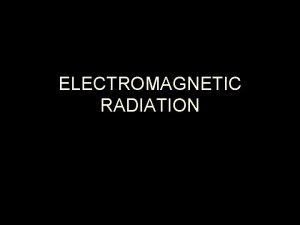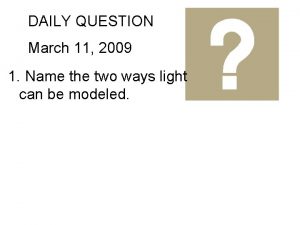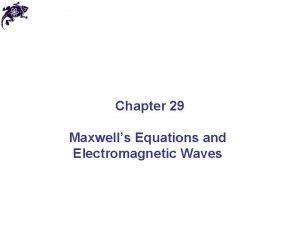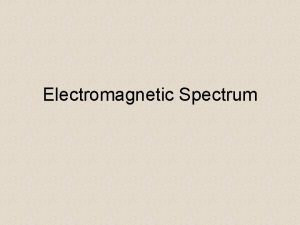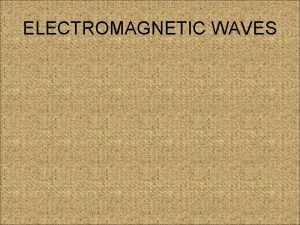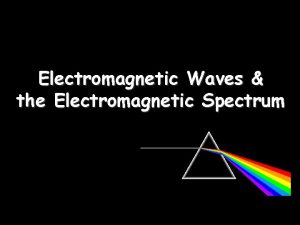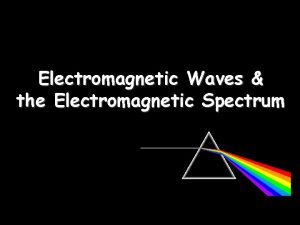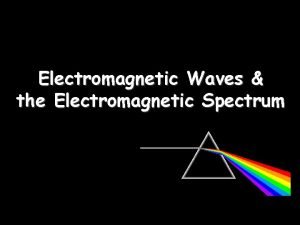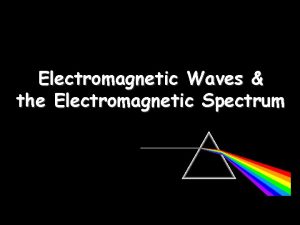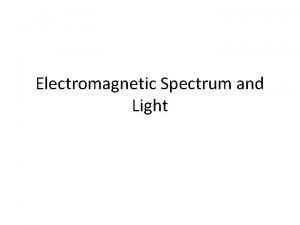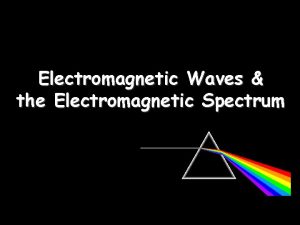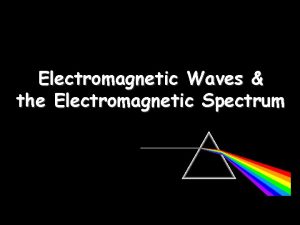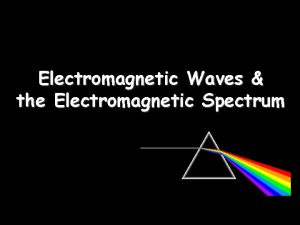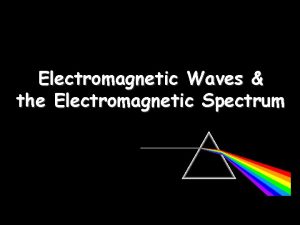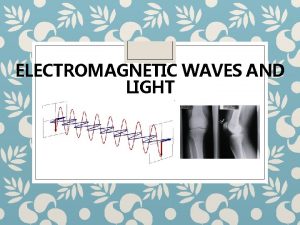Electromagnetic Spectrum Waves Waves are pure energy Waves





















- Slides: 21

Electromagnetic Spectrum

Waves ©Waves are pure energy. ©Waves carry energy from place to place. ©Examples of waves are ©Heat ©Sound ©Light ©Water


Where is the Electromagnetic Spectrum found?

Visible Light © The only electromagnetic waves we can see. © Their intensities range from red to violet with violet being the highest in energy.

The Electromagnetic Spectrum

Gamma Rays © Have the smallest wavelength, highest frequency, and highest energy of any other type of electromagnetic radiation. © Generated by radioactive atoms in nuclear explosions. © Produced in the hottest regions of the universe © Things like supernova explosions (the way massive stars die), neutron stars and pulsars, and black holes are all sources of celestial gamma-rays.

Gamma rays give us information into such things as nebulas.

Radio Waves © Have the largest wavelengths of all light waves. They can be up to several kilometers long. © Used in Radios, TVs, Communication, and cell phones.

What do radio waves show us? © Different astronomical objects emit different lengths of radio waves. © Scientists can study these emissions in order to learn about the makeup and structure of the universe. CO gases in our milky way galaxy as seen by radio waves

Microwaves © Have wavelengths that can be measured in centimeters © Used in communication, cooking food, sensing, and imaging.

Cosmic Rays ©The universe is constantly giving off microwaves. This phenomenon has been dubbed Cosmic Microwave background. Cosmic Background Explorer (COBE) image

Infrared Radiation ©Ranges in size from a single cell to the head of a pin. ©Used in imaging, heating food, and remote controls. ©Long infrared rays can be felt as heat, short ones cannot be detected by humans.

How do we see with infrared? © Any object that has a temperature radiates infrared radiation (much in the same way very hot objects will emit visible light)

© Infrared images can tell us things about space such as the concentration of stars and dust. Image of the Milky Way. The hazy, horizontal Sshaped feature that crosses the image is faint heat emitted by dust in the plane of the Solar System

Ultra Violet Radiation ©Used in tanning booths, sterilization ©Responsible for sun burns and eye cataracts

X-Rays ©Used in x-ray photographs. ©Extremely small wavelength. Extremely high frequency and energy. ©The earth’s atmosphere is thick enough that x-rays are not able to penetrate to the surface.

© Many things in space emit X-rays, among them are black holes, neutron stars, binary star systems, supernova remnants, stars, the Sun, and even some comets! http: //chandra. harvard. edu/ The sun in x-ray

Compare the different wavelengths from the most harmful to the least harmful ©(Most harmful) Gamma ray, X-ray, UV ray, Visible, Infrared, Microwave, and Radio (least harmful)

C = λν ©The frequency (v) of a wave is the number of waves to cross a point in 1 second (units are Hertz – cycles/sec or sec-1) ©λ is the wavelength- the distance from crest to crest on a wave

Characteristics of Waves © All waves have © Wavelength ( l ) © Amplitude © Speed – how fast a crest travels from one place to another. © Frequency – how many waves pass a point in a unit of time.
 Insidan region jh
Insidan region jh Em radiation chart
Em radiation chart Transverse waves move perpendicular
Transverse waves move perpendicular Electromagnetic waves are transverse waves true or false
Electromagnetic waves are transverse waves true or false Mechanical wave
Mechanical wave Difference between electromagnetic waves and sound waves
Difference between electromagnetic waves and sound waves Difference between matter waves and electromagnetic waves
Difference between matter waves and electromagnetic waves Mechanical waves vs electromagnetic waves
Mechanical waves vs electromagnetic waves Mechanical and electromagnetic waves similarities
Mechanical and electromagnetic waves similarities Mechanical waves and electromagnetic waves
Mechanical waves and electromagnetic waves Energy density of em waves
Energy density of em waves Electromagnetic waves obey principle of .. *
Electromagnetic waves obey principle of .. * Energy carried by electromagnetic waves
Energy carried by electromagnetic waves Shortest to longest wavelength
Shortest to longest wavelength Waves are produced by stars and galaxies
Waves are produced by stars and galaxies Radio waves microwaves song lyrics
Radio waves microwaves song lyrics Electromagnetic spectrum foldable
Electromagnetic spectrum foldable Ultraviolet wave characteristics
Ultraviolet wave characteristics Electromagnetic spectrum micrometers
Electromagnetic spectrum micrometers Electromagnetic spectrum mnemonic
Electromagnetic spectrum mnemonic Electromagnetic spectrum foldable
Electromagnetic spectrum foldable Maxwell’s theory
Maxwell’s theory










